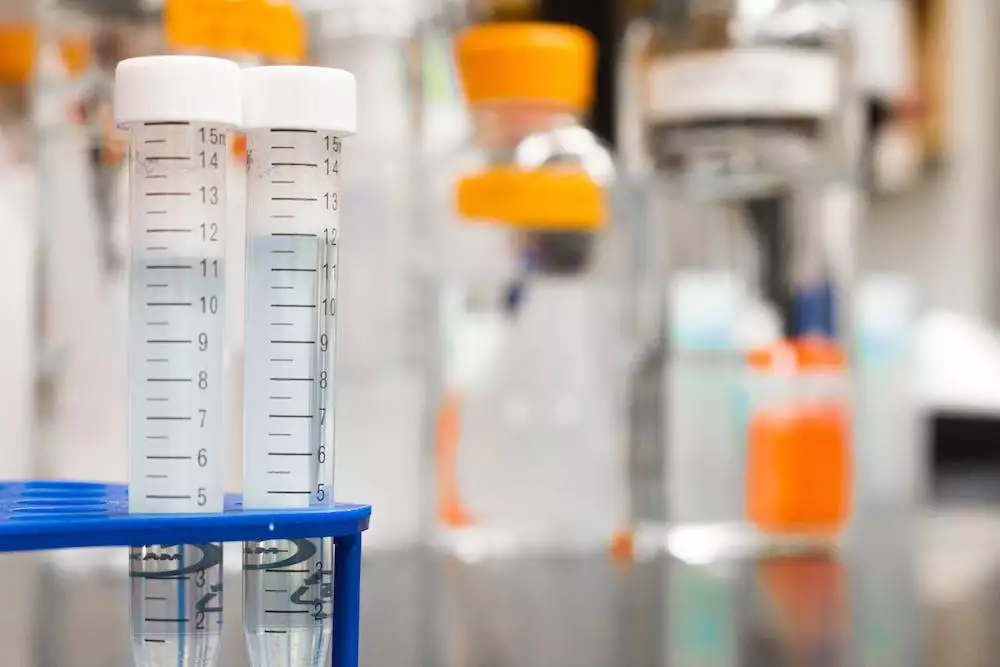Test tubes: essential tools for medical fluid collection

- The importance of test tubes in healthcare
- History of test tubes
- Different types of test tubes and their uses
- Materials used in the manufacture of test tubes
- Correct collection of blood and other fluids using test tubes
- The role of test tubes in disease diagnosis
- Tube handling precautions
- Storage and transport of tubes
- Innovations in test tubes
At every doctor's visit we encounter one of the most popular and necessary items in medical practice - test tubes. These small glass or plastic containers are designed to be used to collect blood, urine, body fluids and other biological materials. The tubes are used to make a diagnosis, monitor the patient's general health and check the effectiveness of treatment. In this article, we will explore in more detail the role of test tubes in modern medicine and what is the process of using them.
The importance of test tubes in healthcare
The importance of test tubes in healthcare is very important. Test tubes are items designed for the collection of blood or other fluids that serve as a valuable source of information about a patient's health status. Modern laboratory diagnostics could not exist without test tubes. They are used to analyse samples of blood, urine, stool and other body fluids to detect the presence of infections, inflammation or metabolic disorders. Importantly, the tubes also allow the patient to minimize the pain and discomfort associated with blood collection. Each tube has a specific colour and volume depending on the type of test it is used for. Careful selection of the correct tube for each specific case is therefore necessary to ensure highly reliable analysis results.
History of test tubes
The history of test tubes dates back to the 17th century, when the first glass containers for laboratory purposes were invented. However, these containers were not yet suitable for taking blood or other fluids from the human body. During the 19th century, special instruments for blood collection began to be developed, but there was still a high risk of infection.
In 1949, then American physician Joseph Kleiner invented the vacuum tube, which allowed for safe and sterile blood collection. This discovery brought about a fundamental change in medicine and allowed for much more accurate diagnosis and treatment of various diseases.
Today there are many types of test tubes, each designed for a specific type of collection or analysis. Test tubes are used not only in medicine, but also in other fields such as pharmaceuticals and the food industry. The history of test tubes shows the importance of the constant search for new technologies and innovations to better understand the human body and its function.
Different types of test tubes and their uses
Tubes are an indispensable tool in laboratories and medical facilities. There are many types of test tubes, which differ in their characteristics and use.
One of the most commonly used types are edetection tubes, which are used to collect blood for biochemical tests. These tubes contain the substance EDTA, which prevents blood from clotting. Another type is heparinized tubes, which contain heparin and are used to collect blood for haematological tests.
For serum collection, serum tubes are used with a gel separator that separates blood from serum after centrifugation. Plasma tubes, on the other hand, are used for plasma collection with the same separation principle as serum tubes.
There are also other types of tubes for special purposes, such as PCR (polymerase chain reaction) or microbiology tubes. Each tube has its own purpose and it is important to choose the right one when collecting a sample.
Correct tube handling and subsequent storage are also key to ensuring accurate test results. Therefore, it is important to follow manufacturers' and laboratory technicians' instructions.
Materials used in the manufacture of test tubes
A variety of materials are used in the manufacture of test tubes, which must meet strict quality and safety standards. The most commonly used materials include glass and plastic. Glass tubes are made of borosilicate glass, which is resistant to thermal changes and has a high chemical stability. Plastic tubes, on the other hand, are suitable for single use because they are hygienic and do not need to be sterilised. The material used in the manufacture of the tubes must also be inert - it does not react with the sampling fluid and does not damage it. Specific types of tubes with different volumes and shapes are used for each type of collection to ensure the most accurate collection and subsequent analysis of the sample.
Correct collection of blood and other fluids using test tubes
Correct collection of blood and other fluids using test tubes is a key step in diagnosing a variety of patient diseases and conditions. Test tubes are special containers used to draw blood or other fluids from the body. For proper collection, it is important to follow hygienic procedures to avoid infections. It is also important to know which tube to use for the type of collection and the amount of sample needed for the test. After collection, it is important to label the tubes properly and store them in a refrigerator or other suitable area. Thus, proper collection of blood and other fluids using tubes is essential to ensure quality patient care.
The role of test tubes in disease diagnosis
Tubes are one of the most important items that are used in diagnostic laboratories to collect blood or other fluids. These small glass or plastic containers are of crucial importance in the diagnosis of diseases, as they allow laboratory personnel to examine samples of body fluids and identify various pathological processes in the patient's body.
Without detailed analyses and tests performed on samples of blood, urine, or other fluids, many diseases would be nearly impossible to diagnose. Test tubes allow laboratory personnel to simplify the process of sample processing and analysis, enabling them to provide better information for medical diagnosis.
Today, there are many types of test tubes with different cap colors, which allows for the differentiation of different types of test substances. The tubes are also made in a special way to minimize sample contamination and keep them safe and sterile.
All in all, test tubes are an essential tool in laboratory diagnosis of diseases. Without them, it would be much harder to obtain the information needed for a successful medical diagnosis, and patients would be at risk of many complications related to poor health care.
Tube handling precautions
The handling of test tubes during the collection of blood or other fluids is a crucial part of the diagnostic process and medical examination. However, this activity can be very risky for medical staff and the patients themselves if proper safety precautions are not followed. Among the most important are wearing protective gloves, putting on mouth and nose covers, disinfecting the injection site and proper handling of used tubes. It is also important to ensure that tubes are properly labelled to avoid confusion of samples and subsequent misdiagnosis. A firm stance against breaches of safety measures by all staff in healthcare facilities should be a priority in order to minimise risks to the health of patients and staff.
Storage and transport of tubes
Storage and transport of test tubes are crucial to maintain the quality of specimens. Tubes should be stored at the correct temperature and protected from light and vibration to prevent sample damage or degradation. For transport, it is important to ensure safety and hygiene to prevent the release of hazardous substances into the environment. In healthcare facilities, special containers with protective padding and identification labels are used to clearly mark the contents. Proper storage and transport of tubes are essential to ensure proper diagnosis and treatment of patients.
Innovations in test tubes
In recent years, there have been major innovations in the field of test tubes that improve not only the process of collecting blood and other fluids, but also the quality and reliability of test results. One of the innovations is so-called safety tubes with protective caps that minimise the risk of accidents when handling the collection material. There are also so-called vacuum tubes, which allow faster and more efficient blood collection thanks to the vacuum system. Also new are special nitro coated tubes that minimise the risk of sample contamination and subsequent distortion of the test result. These innovations show the direction in which the tube field is evolving - towards safety, comfort and accuracy in the process of collection and analysis of biological materials.
In conclusion, test tubes are an indispensable tool for the collection of blood or other fluids. Thanks to them, doctors can quickly and efficiently obtain the necessary samples and carry out diagnosis and treatment. It is important to take care to use the tubes correctly and to sterilise them to avoid the risk of infection. Although this is a technological invention of relatively recent date, it is impossible to imagine modern medicine without test tubes.
Published: 19. 08. 2023
Category: health




